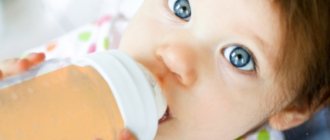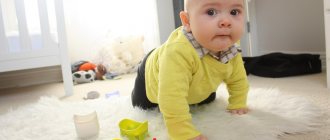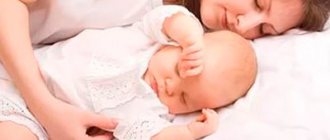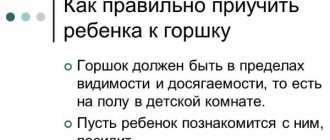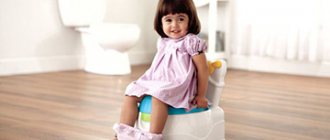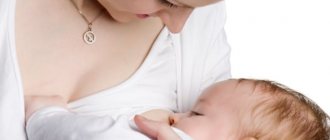Greetings, friends. Today we will talk about nipples, or more precisely about how to accustom your child to this wonderful invention.
It so happened that in most illustrations, cartoons or feature films a child is depicted with a pacifier. There is such a stereotype. The baby has not yet been born, and parents are already running to buy him a pacifier so that he has one. After all, this seems to be an ordinary pacifier, all children suck on it and there is nothing special to think about.
Honestly, if you analyze all the information that is written on the Internet or in print publications dedicated to the child, you can read a bunch of horror stories and a lot of laudatory odes regarding nipples. Today we will try to comprehend all this information and translate it into human language and still figure out in what cases a child needs to be accustomed to a pacifier, and when it is better to ignore this object altogether.
Is it necessary to accustom a child to a pacifier?
Experts assure that a nipple is not required when breastfeeding, since in infants the sucking reflex finds a “way out” in the most natural way. In addition, a baby accustomed to a pacifier begins to latch onto the mother’s breast incorrectly, which leads to milk spillage. There is also a high risk that the baby will refuse the breast altogether.
However, if the child is bottle-fed, sometimes you cannot do without a pacifier. A baby who eats formula spends less energy than a baby, so the pacifier becomes necessary for him - energy is spent on the sucking process, and the baby, tired, is less capricious and screams.
The benefits of using a pacifier include the following.
- Helps calm the newborn. The sucking reflex in babies is the main one; during the process, the child completely focuses on this type of activity, and therefore stops being capricious and crying.
- A pacifier can literally save a child's life. Research by American pediatricians has proven that holding it in the mouth protects the baby from the tongue sinking, which can cause respiratory arrest. As a result, the child is protected from sudden death syndrome.
- Promotes hygiene. Some children in whom this reflex is overexpressed begin to put literally everything in their mouths: fingers, toys, even diapers. And the pacifier comes to the rescue, helping not to put various objects in the mouth and not catch an intestinal infection.
A child who is calmer while sucking can be left with his dad or grandmother for a while if the mother urgently needs to leave on business. Or take him for a walk - he will be busy with his own business and will not annoy others with shouts.
Cons of pacifiers
In some cases, a pacifier is really useful - the child is occupied with it, calms down faster, spending energy on sucking, so there is less energy left for crying and whims. However, doctors have also identified disadvantages of pacifiers.
- If you use a pacifier during breastfeeding, there is a chance that the mother will have less milk. By constantly putting the baby to the breast, lactation is stimulated, but if this is not done, the result will be the opposite.
- According to dental research, a pacifier has a bad effect on a baby’s bite. Subsequently, the teeth will be uneven, problems will appear with the articulation of individual sounds, and some babies will not want to talk at all for a long time.
- Neurologists have found that regular “communication” with a pacifier has a negative impact on the development of the child. And children very quickly get used to it and react very poorly to subsequent attempts at weaning.
- If overlooked, the nipple may fall to the floor, and not all parents have the time or desire to constantly sterilize it. Therefore, an infection can enter the child’s mouth and stomach, causing stomatitis, candidiasis and other problems.
- Some inexpensive pacifiers are made from low-quality latex, a material that can cause an allergic reaction.
That is why, before accustoming your baby to a pacifier, you should think about whether this is necessary. After weighing all the pros and cons, the mother must make a decision.
Let's summarize. When breastfeeding, the use of this device is extremely undesirable, but if the baby is on artificial formula, then the pacifier is often very useful.
Possible consequences
Frequent pacifier sucking can lead to:
- Disruption of the natural process of breastfeeding.
- Lack of normal development of the respiratory system, which creates the preconditions for the development of inflammation of the maxillary sinuses, ear disease, and adenoid vegetation.
- Creating conditions for the formation of malocclusion.
- Changing a child's face. It becomes elongated and narrow, the nose moves slightly forward and upward. The upper lip takes the shape of a triangle. At rest, the mouth is constantly open, mouth breathing appears.
- Poor posture. The head and waist of the upper limbs move forward, and a stoop appears. This happens due to the fact that the lumen in the respiratory tract becomes larger, the passage of air becomes easier, and the load on the soft tissues decreases.
Each child is unique and individual. Some children easily accept innovations, others do not. Parents are required to have patience and the ability to distinguish simple whims from the desire to communicate with their mother, which cannot be replaced by any means.
At what age can you give your child a pacifier?
Pediatricians have established a certain threshold until which it is best not to introduce the baby to this device: from birth to 28 days. Otherwise, the baby may refuse to breastfeed. It is best to offer a pacifier to a two-month-old baby for the first time; it is also possible to conduct the first acquaintance at 3 months. It is during this period that the sucking reflex is most pronounced. It is important that there are objective reasons - for example, if breast milk is not enough and formula has to be used, as well as when gradually weaning the baby from the breast if the mother needs to return to work.
However, in cases where the baby has no interest in the pacifier and is not prone to whims, then it is best to abandon such a “tool” altogether.
Weaning from the pacifier should be carried out by 6 months, when the sucking reflex weakens and the first teeth begin to appear. Before the year is over, this important task must be completed.
Advice for parents of infants
If the baby refuses the pacifier and no methods help persuade him to use this thing, then there is no need to force him and be upset about the failure. Attempts can be repeated periodically, each time offering a new pacifier. Perhaps at some point the child will like this or that pacifier, and the problem will be solved.
If parents receive refusals for several months, then you need to come to terms with the baby’s choice; for some children, the mother’s breast or a bottle with formula is enough to satisfy the sucking reflex.
ATTENTION! You should not continue to insist on a pacifier if the baby is already more than six months old, and by the age of one year there is absolutely no point in teaching him.
How to choose a pacifier?
When you decide to give your baby a pacifier, you should carefully choose it, since modern manufacturers offer a huge selection of such products for the little ones.
What should you pay attention to when choosing your first pacifier? First of all, this is the form.
There are three types of nipples.
- Classic (round) , the simplest and most familiar. Suitable for every baby, but too frequent use can lead to malocclusion.
- Anatomical. It fully corresponds to the structure of the oral cavity of a two-month-old baby; it is an ellipsoid, flattened on one side, due to which such a product does not negatively affect the formation of the bite. There are models that imitate female nipples with their shape.
- Orthodontic. It imitates the mother's breast to the best extent, is simple and easy to use, forms the correct bite, but quickly becomes addictive.
When choosing, you may have to go through a series of excrement, since all children are different and what suits one may not please others at all.
The next parameter you should pay attention to is size. There are three of them.
- A – from birth to 6 months. Do not forget that doctors do not recommend using a pacifier for a month-old baby; acquaintance with it should be done no earlier than the baby turns 28 days old.
- B – 6-18 months.
- C – for children from one and a half years old. Again, pediatricians strongly recommend weaning your baby from sucking a pacifier by the age of one year.
The division into sizes is conditional - if a child is already significantly ahead of his peers in height and weight, it is permissible to give him larger options, the main thing is that he is comfortable.
Finally, you need to pay attention to the material.
- Rubber was used to produce goods for babies in the Soviet period, but is now rare because it can cause allergies and diathesis, but when the first teeth appear, it is perfect.
- Latex products are soft and comfortable, so they are recommended for little ones. However, such a pacifier cannot be boiled or doused with boiling water - the material cannot withstand exposure to high temperatures, so high-quality sterilization is out of the question. In addition, due to the protein content of latex, it can cause allergies. The shelf life of such a pacifier is no more than a month, after which it must be replaced.
- Silicone models can be boiled; due to the absence of smell and taste, such a pacifier is hypoallergenic, but due to its rigidity it can lead to tooth deformation - which is why it is permissible to give it to the baby only before the first tooth erupts. Duration of use – up to 6 weeks.
It is also important to pay attention to the shield - the base, which should be wide enough to prevent accidental swallowing. It is also necessary to have a cutout-recess, designed not to interfere with the baby’s normal breathing through the nose. Models with a textured inner surface are very comfortable; they will prevent the accumulation of saliva.
The main rules when choosing a pacifier are safety for the child and convenience.
Types and features of modern accessories
Today, baby pacifiers come in a wide variety of shapes, types and sizes. They are made of silicone, latex and a special rubber composition, due to which they have different densities and degrees of softness.
Matveev I. A. pediatrician, Children's clinic No. 2, Moscow
Different nipples are suitable for different ages; this should also be taken into account when purchasing. There is a large selection, and to find the right option for your child, sometimes you have to try several different types.
To understand which pacifier is better, you need to understand the materials used to make these accessories.
The most popular today are products made of silicone, latex or rubber:
- A latex pacifier is soft and elastic, usually used for children immediately after birth, or premature babies . But a pacifier made of this material cannot be boiled or even doused with hot water.
- The silicone pacifier is more elastic and resistant to high temperatures.
A pacifier holder is an important thing when walking with your baby
. Therefore, it is easier to care for and lasts longer. But the strength of the material can subsequently affect the shape and proper growth of teeth, so after 6 months they are not recommended to be used . - Rubber nipples are used the longest, but do not lose their relevance. The reason for this is their benefits during teething. From 6 to 9 months, they are indispensable for the baby , as they soothe his pain and give him the opportunity to scratch his gums.
To determine which pacifier to buy for your baby, you need to consider their options and varieties, and choose the best one, including the price:quality ratio.
Despite the wide variety on the market, the leaders are only a few companies that produce the best pacifiers for newborns. Their comparative characteristics are presented in the table
| Accessory name | Advantages | Flaws | average cost |
| AVENT |
|
| 250-300 rubles |
| NUK |
|
| 280-300 rubles |
| CHICO |
|
| 200-220 rubles |
| NUBY |
|
| 300-320 rubles |
| CHAMOMILE |
|
| 180-200 rubles |
Most of the models described and many others can be purchased in specialized children's stores or at a pharmacy. Our most popular pacifiers are Avent and Nuk.
The design of baby pacifiers from the manufacturer Philips Avent is distinguished by its bright and varied design and high-quality materials
Small points of sale or markets are not the best place to choose such an accessory for a child. However, prices for Romashka or Nuby nipples, for example, are lower in the markets, which is often taken advantage of by thrifty buyers.
Romashka pacifiers cannot please with such an interesting design as those of Avent or Chico. The quality of materials and workmanship is worse. But the child does not know this and often gives preference to such simple nipples as Chamomile
A specialized store is more likely to have quality certificates, licenses and certificates authorizing sales from the manufacturer. They also sell additional accessories, for example, a case or fittings for pacifier holders (they are good helpers when walking with a newborn). By contacting reliable places of sale, you can be confident in the quality and authenticity of the chosen product.
Dr. Komarovsky’s video will help you figure out how to choose the right one.
How to train?
So, the pacifier that suits the baby has been selected. All that remains is to accustom the child to sucking a pacifier. You should put the baby in the position in which he is used to taking milk or formula, and then carefully place the pacifier in his mouth. For the first few minutes, you can hold it with your hand so that the baby understands what he needs to do.
A little secret - you can try to let the baby get acquainted with the pacifier at the moment when he began to be capricious. Often it is possible to kill two birds with one stone - both to calm the baby and to teach him to suck a pacifier.
When the child has already learned, you should control the time during which he holds his new “toy” in his mouth. To do this, parents are advised to hide the pacifier at the moment when the awake baby spits it out and forgets it for a while. When the baby falls asleep, it is also better to remove the pacifier from his crib.
It is important not to use this item as the easiest way to solve problems. That is, you should not immediately put a pacifier in his mouth as soon as the baby starts crying. This can cause serious psychological trauma to the child. First, you need to try to calm him down using other methods - most often, maternal warmth and affection help to cope with crying and whims.
Why doesn't the child take the pacifier?
Not everyone manages to train a baby simply and without problems, so the question of what to do if a child does not take a pacifier is especially acute. First of all, let us note: if the baby has already crossed the 6-month threshold, then there is no need to try, anyway, he will be weaned very soon. But if the baby is 1-3 months old, the problem is worth solving.
A baby may spit out a pacifier for the following reasons:
- it is not the right size for him;
- inconvenient in shape;
- I don't like the taste.
In this case, the device should be replaced, having correctly determined the size and shape. You need to be prepared for the fact that you will have to try several pacifiers before your child chooses his ideal one.
In some sources you can find recommendations to lubricate the pacifier with honey or sweets, and apply a little mother's milk to it. Doctors and experienced mothers do not recommend using such tricks, since sugar can cause diathesis, honey is a strong allergen, and milk on a pacifier can cause the baby to refuse to latch on to the breast.
These are the basic tips to help you get your baby used to the pacifier. However, let us remind you that this is not at all necessary, and in some cases it is not even recommended at all.
General recommendations
Pediatricians disagree on whether this device is necessary for a newborn , but the final decision always remains with the parents. If, after studying the advantages and disadvantages, the choice is still made in its favor, situations often occur when the child resists and does not accept the pacifier.
In this case, it is necessary to offer the baby different types of pacifiers. They vary in shape and type of material; manufacturers guarantee the quality and safety of their products.
Some babies prefer latex nipples, others prefer silicone ones ; a bright appearance can also encourage the baby to get acquainted with a new accessory.
